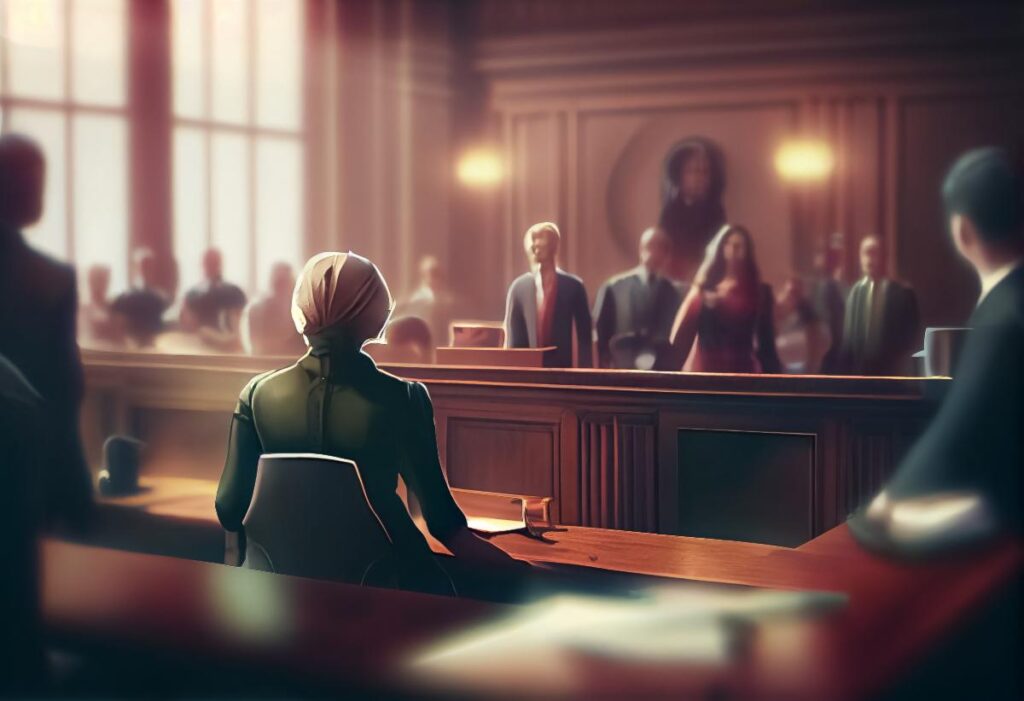
| a series by Dick Fichter, Parishioner with support from Rev. Dina, Rector March 20, 2024 |



| The following contains substantial portions from an article by Professor Doug Linder on the Famous Trials Website, The Trial of Jesus: An Account (2002), and also from the Living in Christ series, the Political and Religious Structure in Jesus’ Time, Saint Mary’s Press, with selections from Raymond Brown’s, The Death of the Messiah, A Commentary on the Passion Narratives. Pontius Pilate’s Authority over Judea Pilate was appointed prefect of Judea in 26. The historian Josephus provides some context about Pilate’s role as prefect (governor), his power, and the nature of the man himself. One of his first actions when he came to power was to direct Roman soldiers to erect busts of Caesar throughout Palestine. Later he also took and spent money from the Temple treasury to build an aqueduct. The Gospels Accounts After his condemnation by Jewish authorities, Jesus was brought to Pontius Pilate. The reason, according to the Evangelist John, was that the death penalty was not an available option for the Sanhedrin under Roman law. (It should be noted, however, that the Sanhedrin operated during these times with less than complete independence to implement Jewish law, having a dual political and religious status.) There is, however, strong reason to believe that Jewish authorities could, had they so desired, executed Jesus. The well-substantiated executions–by stoning–of two first-century Christians, Jesus’s brother James in 62 C.E. and Stephen, show that capital punishment was–at least within a few decades of Jesus’ trial–practiced by Jewish authorities. Moreover, Temple inscriptions from the period warn of death to Gentiles that pass into certain restricted areas. The Gospels are not unified in their view of Pilate. Mark’s Gospel provides the most unfavorable portrayal of Pilate. In Mark’s telling, Pilate understands Jesus was handed over to him out of deep resentment of him, but he does nothing to help, “For [Pilate] perceived that it was out of envy that the chief priests had delivered him up.” There is reason to believe Pilate was essentially fed up with the Jewish people. At one point, Pilate asks the crowd to, what might have been through gritted teeth, to explain their thirst for the blood of Jesus: “Why, what evil has he done?” And perhaps growing tired of dealing with the issue, Pilate allows the crucifixion of Jesus. The Gospel accounts indicate that it was not out of a conviction that Jesus did anything wrong, but only to “satisfy the crowd” that Pilate allowed the crucifixion. And finally, the Gospels report that after authorizing his execution, he “washes his hands.” He was done with it all – the issue and these people. Consider the Conditions at the Times the Events Took Place In Jesus’ time, the main mode of travel was walking. The means of communication was by word of mouth. The time for gathering an unruly and disorganized crowd to gather to address the complexity of the life-death issues discussed, it would seem there would have to be daylight. Consider these conditions in light of your own experiences with the amount of time it takes to participate in meetings on complex issues, setting up meetings, travelling, all without the aid of modern equipment. The distance between events was relatively short. The Timeline from the Time of Jesus’ Trial with Pilate to His Crucifixion |

| In considering the likelihood of the above gospel portrayals, we considered the timeline from the time just before the trial before Pilate to when Jesus was crucified. Mark 15:25, “It was nine o’clock in the morning when they crucified him. Mark 15:33 says that when it was noon, darkness came over the whole land until three in the afternoon at which time Jesus breathed his last. Mark 15:1 says that as soon as it was morning, the chief priests, with the elders, the teachers of the law, and the whole Sanhedrin, made their plans. So, they bound Jesus, led him away, and handed him over to Pilate. It is reasonable to assume that morning started at six o’clock. It seems reasonable that the time period from the time Jesus was brought before Pilate and then crucified, which is understood as being nailed to the cross, was about three hours. The three hours included the time making their plans and taking Jesus to Pilate and assembling a crowd. Let us further consider the events described by Mark 15:16 while considering how long you think these events took in the three-hour period, a portion of which was already used for the time before Pilate. The soldiers led Jesus away into the palace (that is, the Praetorium) and called together the whole company of soldiers. They put a purple robe on him, then twisted together a crown of thorns and set it on him. And they began to call out to him, “Hail, king of the Jews!” Again and again, they struck him on the head with a staff and spit on him. Falling on their knees, they paid homage to him. And when they had mocked him, they took off the purple robe and put his own clothes on him. Then they led him out to crucify him. As we know this was along the Via Dolorosa which is a distance of about 0.4 miles carrying a cross part of the way, after having been beaten. They brought Jesus to the place called Golgotha. Then they offered him wine mixed with myrrh, but he did not take it. And they crucified him. It was nine in the morning when they crucified him. Conclusion It seems unlikely that there was enough time for all of the events described to happen. It is most respectfully submitted that the circumstances as presented, especially when the relationship of Pilate and the Sanhedrin and Rome is considered, can only lead to the conclusion that Pilate simply went along with the Sanhedrin’s request to crucify Jesus without any real discussion or input from a crowd. What is your conclusion considering the “facts” as presented or otherwise? While the above may have been an interesting look into the particulars of the trial of Jesus, it does not change the fact that God so loved the world that he gave his only begotten son to suffer and die for us on the cross. Thank you. |

Do you have any questions for the Camel? Questions about God, or Jesus, or the Church? About how to be Christian? Submit them via email to clergy@epiphanyec.org. Your name will be kept anonymous.
And a response will show up in a future Hump Day Message!

| God Loves You. No Exceptions. Tonight is the Final Lenten Compline Continues Over Zoom Join at 7pm using Link: https://us02web.zoom.us/j/87879091376?pwd=LytDUmx2d2t4azA3TXRYL3lFeGs5dz09 |
| Holy Week Schedule 3/24 – 3/30 3/24 – Palm Sunday 3/28- Maundy Thursday – Holy Eucharist and Foot Washing in Nave & Stripping of the Altar: 7 p.m. 3/29 – Good Friday – Service in Chapel: 12 p.m.; Service in Nave: 7 p.m. 3/30 – Holy Saturday – Short said service in Nave: 10 a.m. Decoration of church for Easter Sunday 10:15 a.m. Easter Sunday! 3/31 Worship at 10am, Flowering the Cross before and Egg Hunt follows. |


